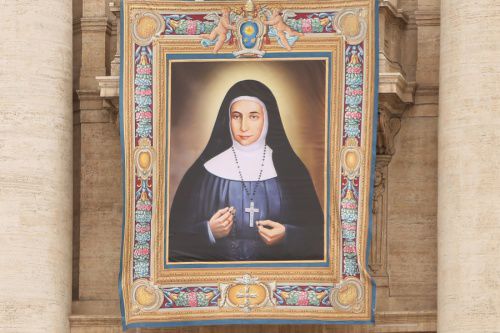The Catholic Church’s celebration of the canonization of two new women saints from Palestine on Sunday helps recognize both women’s important role in Arab culture and Arabs’ important role in Christianity. “These two humble and simple women, consecrated women, give us also encouragement to pray for peace,” said Father Rifat Bader, general director of the Catholic Center for Studies and Media in Amman, Jordan. He was in Rome for the May 17 canonizations of Saints Mariam Baouardy and Marie Alphonsine Danil Ghattas. Saint Marie Alphonsine herself called for prayer of the Rosary “for peace and tranquility in our region,” Fr. Bader told CNA ahead of the event. Pope Francis presided over the canonizations and Mass in Saint Peter’s Square, before a congregation of tens of thousands of people. The canonization of these two women saints, Fr. Bader said, is “a good example for all the citizens,” Muslims, Jews, and Christians alike. The canonizations show “that the woman can do positive and good things in her society.” “It’s very important issue to talk about the mission, or the role, of women in our Arab countries,” Fr. Bader said, explaining that the role of a woman within society and within her own family is not always recognized for its importance. “Now, when we talk about these two examples, of saints, women, from the Holy Land, it gives encouragement for the woman to go ahead and to go forward.” One of the new Palestinian saints, Sister Mariam Baouardy (1846-1878) was a mystic and stigmatic also known as Mary Jesus Crucified. She was a Palestinian and foundress of the Discalced Carmelites of Bethlehem. She and her family were members of the Melkite Greek Catholic Church. She spent time in France and India before helping to found the Carmelite congregation in Bethlehem in 1875. The other new Palestinian saint, Sister Marie Alphonsine Danil Ghattas (1843-1927), was a co-founder of the Congregation of the Rosary Sisters. Born in Palestine, she spent much of her life in Bethlehem and its area, where she helped the poor and established schools and orphanages. Father Bader explained the joint identity of being Arab and Christian simultaneously. “We have the possibility to be saints, even if we are Arabs,” he said. “It’s not something impossible.” The region is not unknown for its saints. “The Virgin Mary herself was living in the Holy Land,” Fr. Bader observed. Also from the region were all the companions of Jesus Christ, including Saint Peter who was buried at the very basilica where the canonizations took place. “Now we have these new saints of the modern time,” he said. “That’s why we are happy: that modernity cannot forbid a person to be a saint.” The Palestinian women were canonized alongside two others: Saint Jeanne Emilie de Villeneuve (1811-1854) and Saint Maria Cristina Brando (1856-1906), from France and Italy, respectively.

